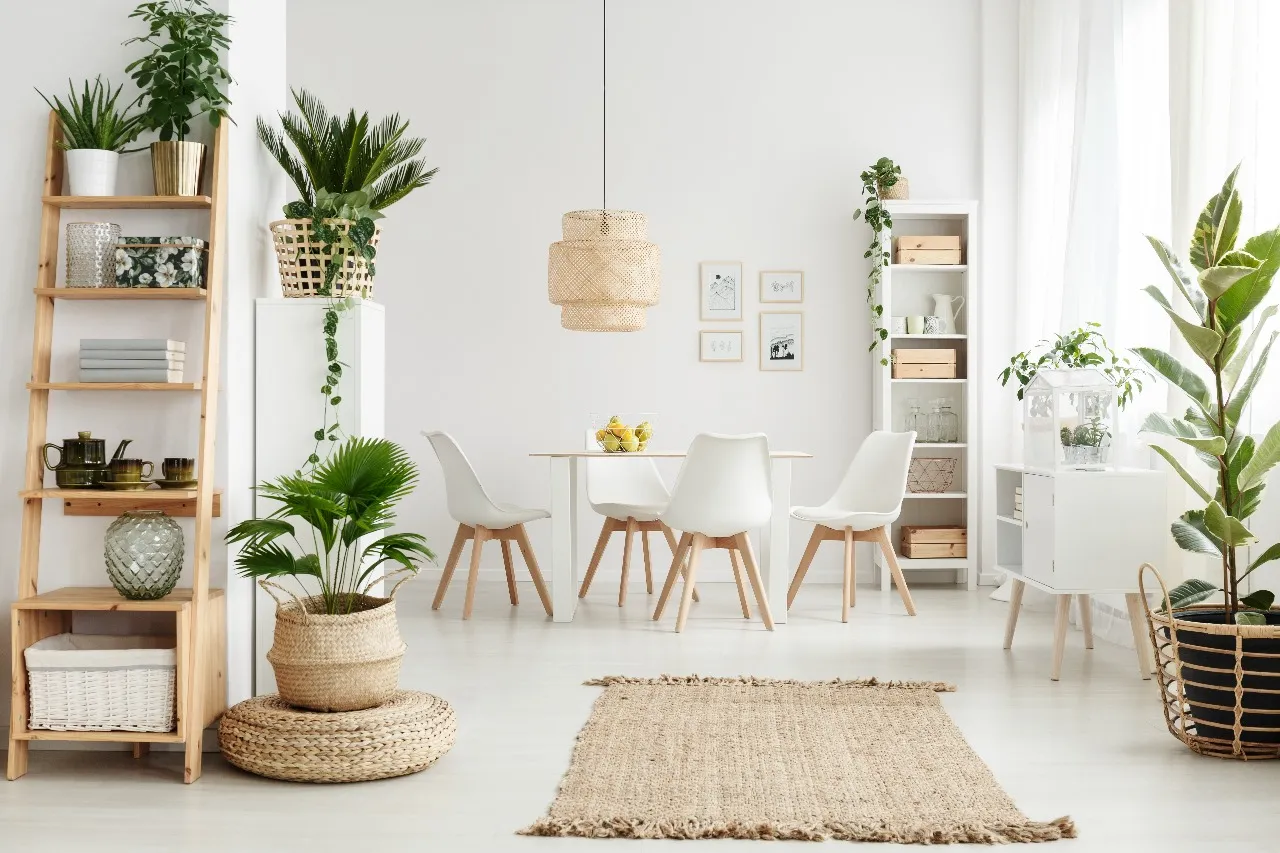What Sets Scandinavian Interior Design Apart? A Style Comparison

Scandinavian Interior
Scandinavian interior design, also known as Scandi for short, has taken the world by storm with its clean lines, natural materials, and cosy atmosphere. This minimalist yet inviting style has become synonymous with comfort, functionality, and aesthetic appeal.
In this blog post, we’ll delve deeper into the core elements of Scandi interior design, compare it to similar styles, and provide practical tips on how to achieve an authentic Scandi look.
Understanding Scandi Interior Design
At its core, Scandi interior design is a celebration of simplicity and functionality. It’s about creating spaces that are both beautiful and practical. Here are the key elements that define this style:
Clean Lines and Minimalist Aesthetic
Scandi interior design avoids clutter and focuses on essential forms. Clean lines, simple shapes, and a minimalist approach create a sense of calm and order.
Natural Materials
Natural materials like wood, stone, and textiles are integral to Scandi interior design. They bring warmth, texture, and a connection to nature into your home.
Neutral Colour Palette
The Scandi colour palette is dominated by neutral shades like white, grey, and beige. These colours create a serene and timeless backdrop for your space.
Ample Natural Light
To make the most of the limited daylight, Scandinavian design uses large windows and light-coloured walls to maximise natural light.
Functional and Comfortable Furniture
Scandi furniture is designed to be both functional and aesthetically pleasing. It’s often characterised by simple, clean lines and comfortable seating.
Key Differences: Scandi Interior Design vs. Similar Styles
To truly appreciate the unique qualities of Scandi interior design, let’s delve deeper into its differences with similar styles:
Warm Minimalism
While both styles prioritise minimalism, warm minimalism leans towards a warmer, more inviting aesthetic. It often incorporates earthy tones, rich textures, and cosy elements like fur throws and velvet cushions. Scandi interior design, on the other hand, maintains a cooler, more restrained palette, focusing on clean lines and natural materials.
Japandi/Japanese Muji
Both Japandi and Scandi share a love for simplicity and natural materials. However, Japandi often incorporates more traditional Japanese elements, such as shoji screens, tatami mats, and low-lying furniture. Scandi, in contrast, has a more contemporary and minimalist approach, with a focus on functionality and comfort.
Farmhouse
The farmhouse style is known for its rustic charm and cosy appeal. It often incorporates elements like natural wood finishes and a warm, inviting atmosphere. Scandi interior design, on the other hand, is sleek and modern, focusing on clean lines and minimalist design.
Other Styles
- Nordic: While similar to Scandi, Nordic design often incorporates darker, richer colours and heavier fabrics. It’s also more likely to feature traditional Scandi patterns and motifs.
- Hygge: Although Hygge is a subset of Scandi design, it is a Danish concept that emphasises cosiness, comfortable interiors and well-being in daily life. It is often associated with warm lighting, soft textiles, and a focus on creating a relaxed and inviting atmosphere.
- Mid-Century Modern: Mid-Century Modern is characterised by its bold colours, geometric patterns, and sleek lines. While it shares some similarities with Scandi, such as the focus on functionality and clean lines, Mid-Century Modern is often more playful and experimental.
Creating an Authentic Scandi Interior Design
To create an authentic Scandi interior, consider these additional tips:
- Incorporate Natural Light: Maximise natural light by using sheer curtains or blinds. Consider adding skylights or large windows to bring in even more light.
- Use a Neutral Colour Palette: A neutral colour palette, such as white, grey, and beige, provides a timeless and versatile backdrop. You can add pops of colour with accessories like throw pillows, artwork, or plants.
- Layer Textures: Layer different textures to add depth and interest to your space. For example, combine smooth wood with fluffy sheepskin rugs, or pair linen curtains with a chunky knit throw.
- Embrace Minimalism: Less is more in Scandi interior design. Avoid clutter and focus on essential pieces of furniture and decor.
- Prioritise Functionality: Every piece of furniture and accessory should have a purpose. Choose furniture that is both stylish and functional.
- Incorporate Scandi Patterns: Scandi patterns, such as herringbone, chevron, and geometric designs, can add a touch of traditional Scandi style to your space.
- Add Personal Touches: Don’t be afraid to add personal touches to your Scandi space. Family photos, artwork, and sentimental objects can make your home feel more inviting and personal.
By following these tips, you can create a beautiful and functional Scandi interior that reflects your personal style.
Elevate Your Space with Scandi Design at The Interior Lab
If you’re looking to create a beautiful and functional Scandi interior design for your home, The Interior Lab is here to help. Our team of experienced designers can provide expert guidance and personalised design services to transform your home into a serene and stylish space.
Contact us today to book a consultation!
CONSULT OUR DESIGNER
-
30 April 2025 DESIGN INSPIRATIONTIPS & GUIDES
Why a Dry Pantry Deserves a Spot in Your Renovation Plans
-
29 April 2025 DESIGN INSPIRATION
Best Solo Living Interior Design Concepts (Singapore Style)
-
29 April 2025 HOME TOUR
Residential Interior Design Essentials: Mood Board for Inspiration
-
29 April 2025 HOME TOUR
Quiet Luxury: The New Interior Design Concept in Singapore
-
29 April 2025 PRE-RENOVATIONTIPS & GUIDES
Modern Monochrome: Top Choice for Living Room Renovation in Singapore
-
17 April 2025 HOME TOUR
7 Things Homeowners Often Overlook During Renovation

